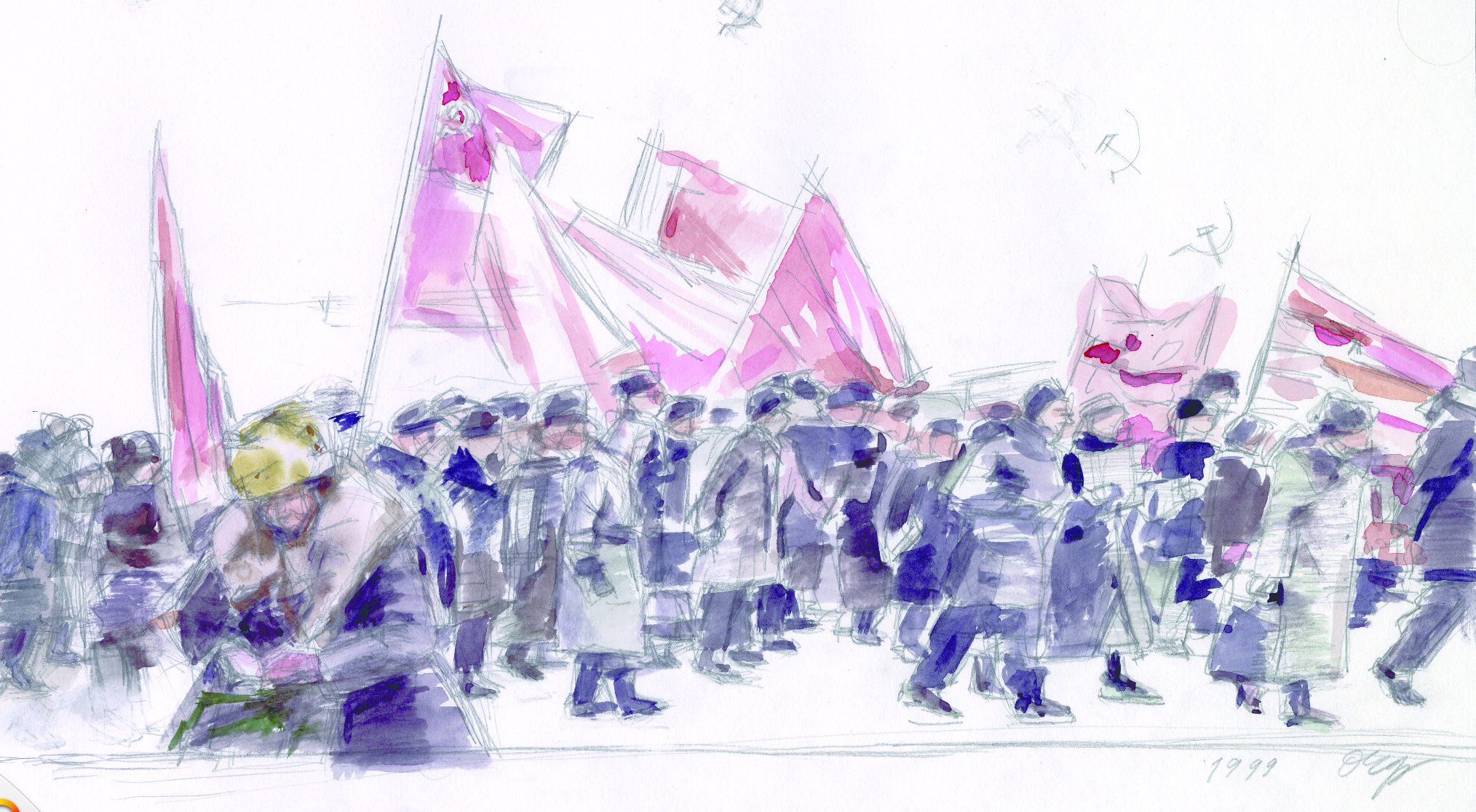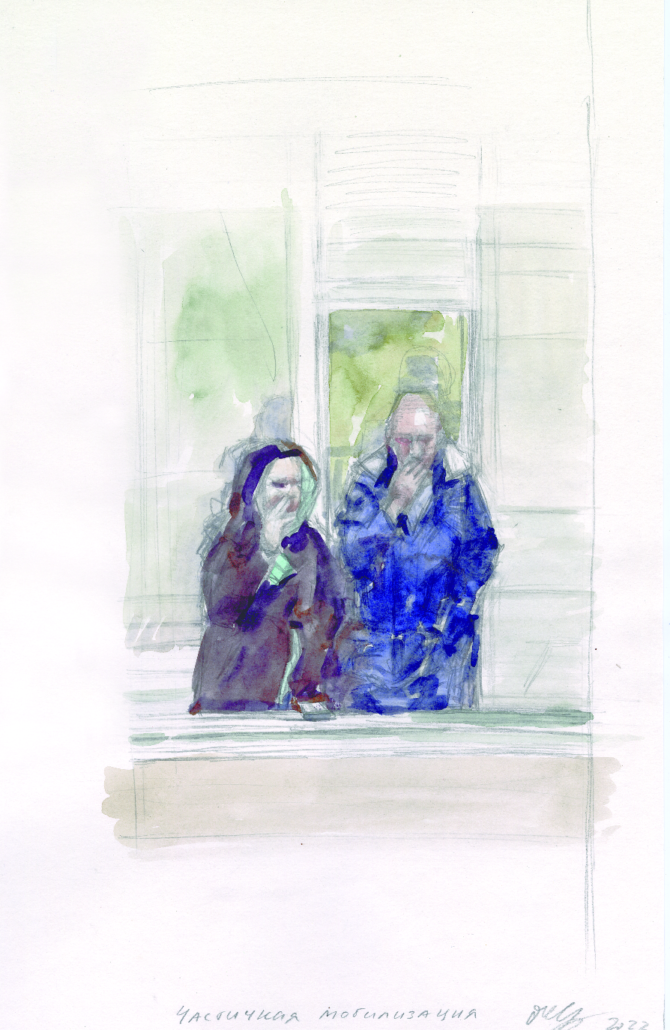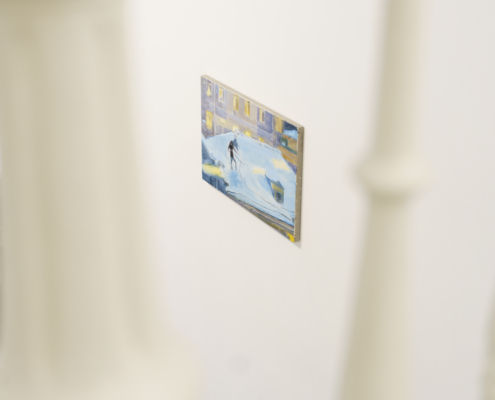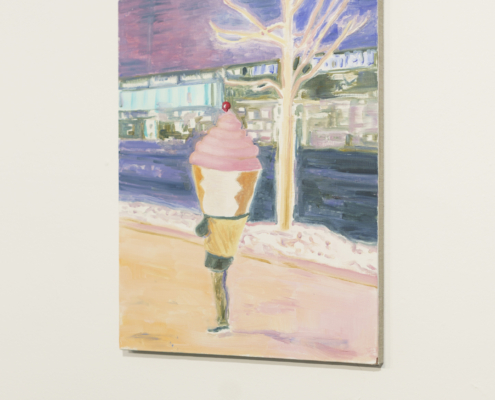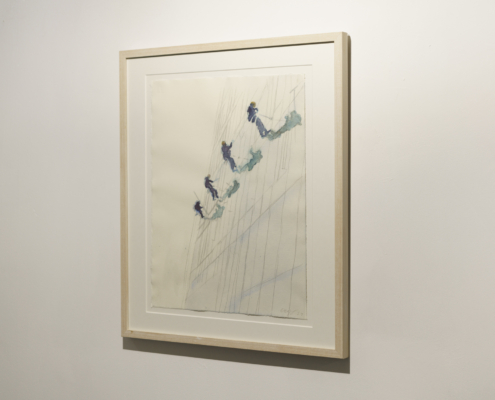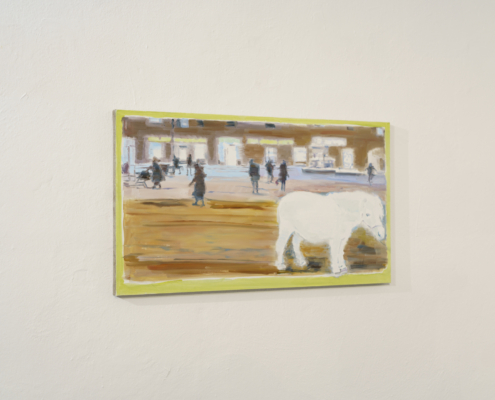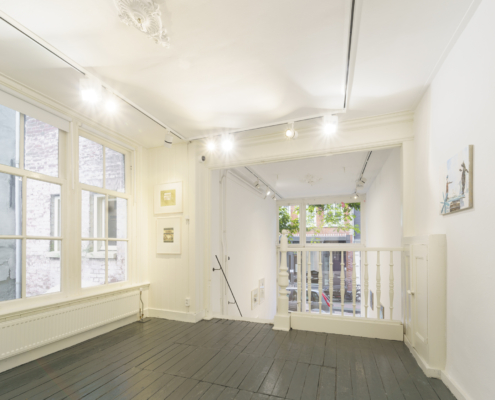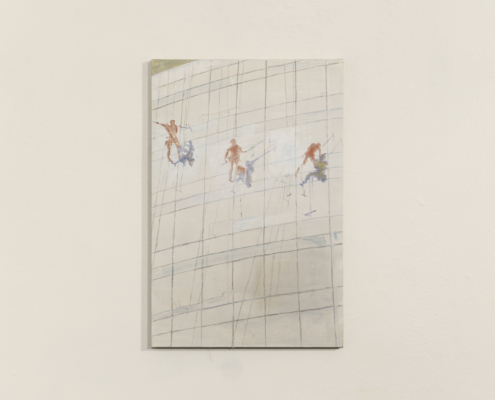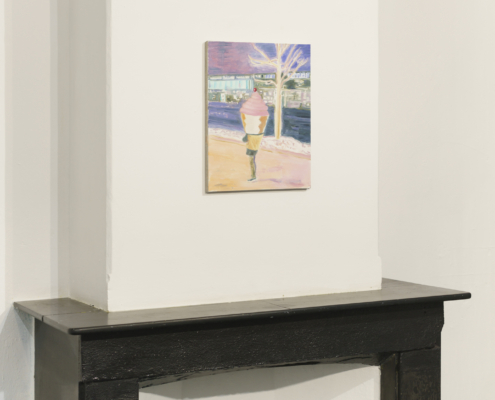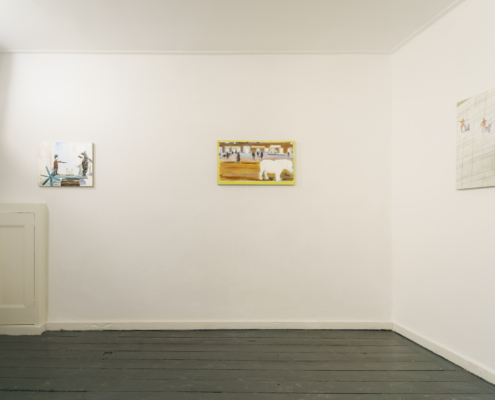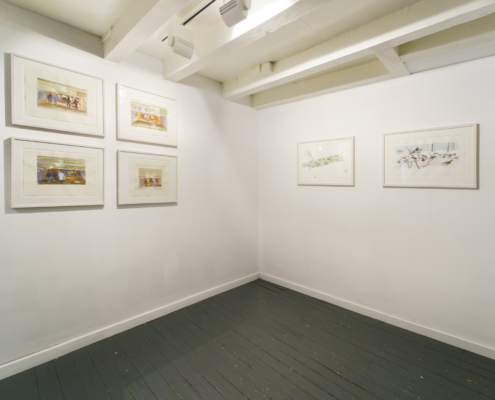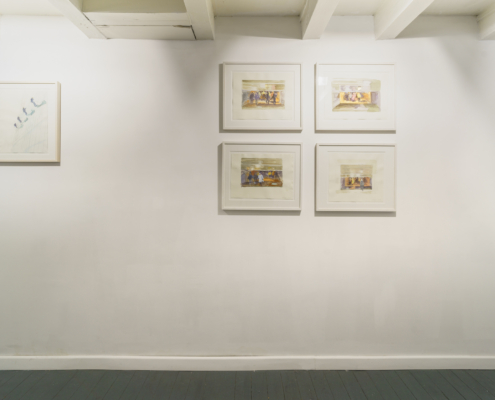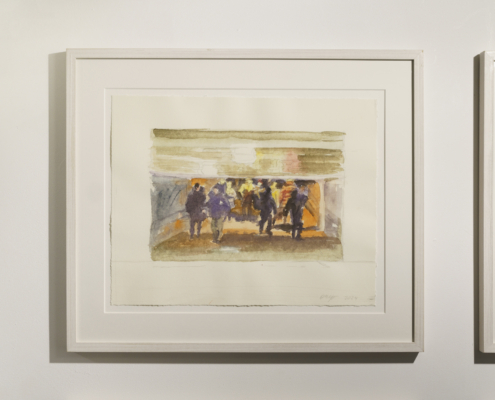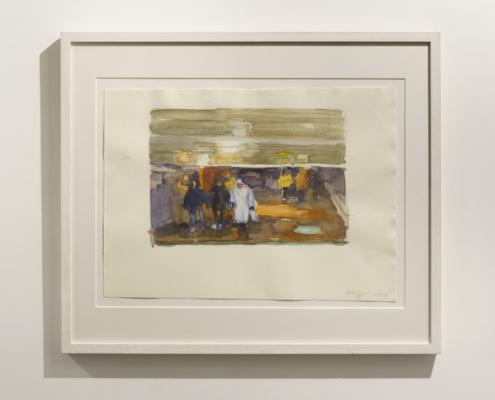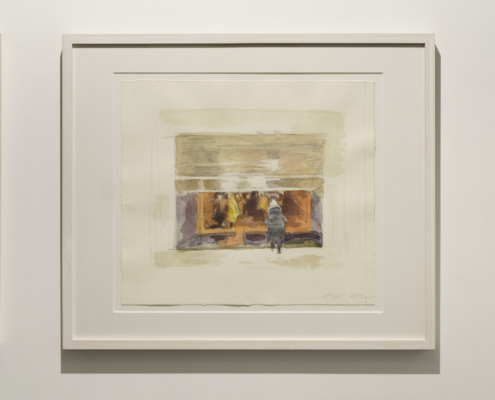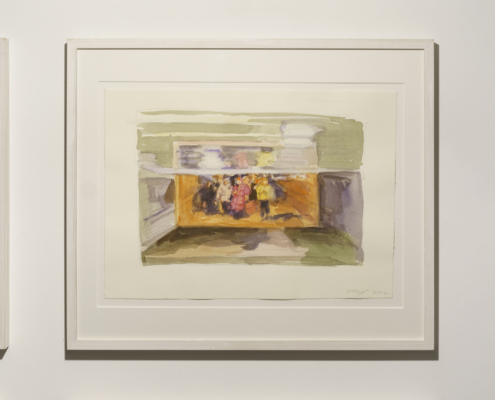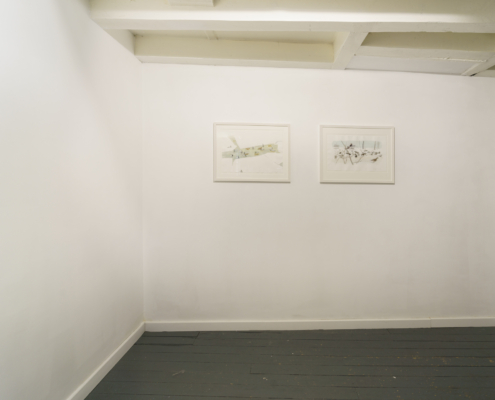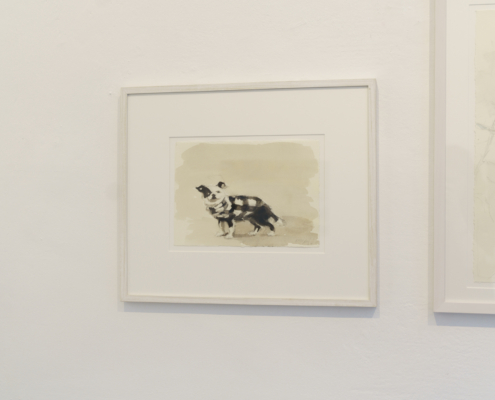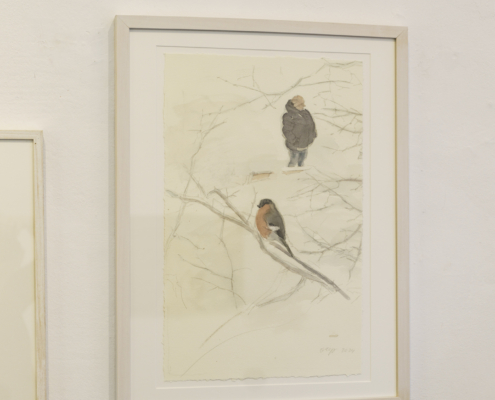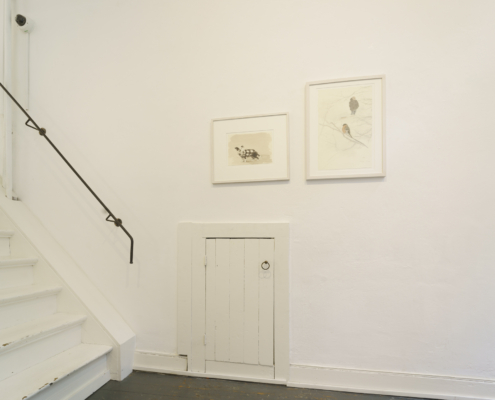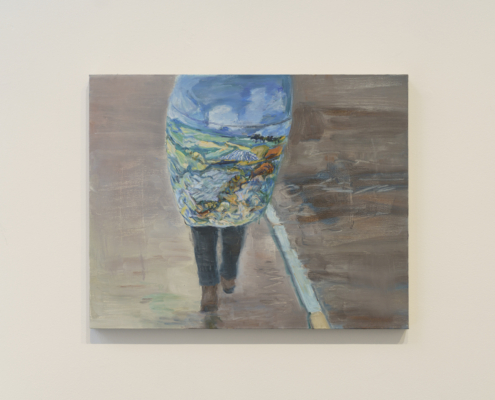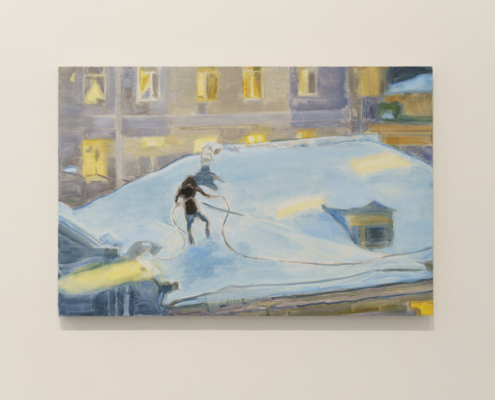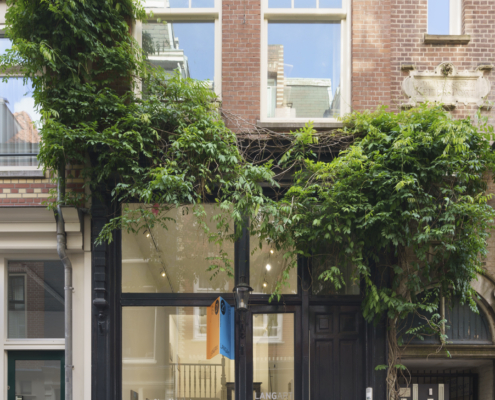Olga Chernysheva
Olga Chernysheva’s often unwitting subjects are observed negotiating a society in turbulence, where the sense of a common future is rapidly dissolving. Her films, photographs, paintings, drawings and object-based works lyrically investigate the fabric of individuality and self-sufficiency and meditate upon the role of the artist in a time of flux. Chernysheva has a vital interest in the relations between object and figure, in particular in the ways that people and the spaces they inhabit seem often to co-exist uneasily. Her backgrounds with their fluctuating tonalities and psychological charge vie with her subjects for center stage
Olga Chernysheva (Moscow, Russia, 1962) lives and works in Moscow. She studied film and animation at the Moscow Cinema Academy and fine art at the Rijksakademie, Amsterdam. Chernysheva has exhibited internationally for over three decades. She won the Guerlain Drawing Prize, in Paris, in 2022 and participated in the Kathmandu Triennale 2077, 2022, in Nepal.
Other recent notable exhibitions include “Workers” at Tate Modern, London, and “GRIDS@RIPS,” a solo at the Foksal Gallery Foundation, Warsaw. She has presented “Chandeliers in the Forest,” a solo at Secession, Vienna; “Revolution Every Day” at the Smart Museum of Art, The University of Chicago; and “Vague Accent,” a solo at The Drawing Center in New York. Large survey exhibitions include Manifesta 11, Zurich, and “All the World’s Futures” at the Venice Biennale in 2015.
The works of Olga Chernysheva are held in major collections worldwide, including MoMA (New York), Tate Modern (London), Centre Pompidou (Paris), Albertina (Vienna), V&A (London), Russian Museum (St. Petersburg), State Tretyakov Gallery (Moscow), The National Museum of Art (Oslo), Ludwig Museum (Aachen), Contemporary Art Museum (Avignon), Neuer Berliner Kunstverein (Berlin), Neue Galerie Graz (Graz), Louis Vuitton Foundation (Paris), Daelim Contemporary Art Museum (Seoul), Museo di Arte Moderna e Contemporanea (Rovereto), Zimmerli Art Museum (New Brunswick, New Jersey), FRAC (Bretagne), EVN (Vienna) and others.
LANGart opens the solo exhibition of Olga Chernysheva (1962) on June 2, during Amsterdam Art Week. In 1994-95 she studied at the Rijksakademie. In 1997, while still working at Singel 74, we made the first exhibition with her. After that, we made three more solo exhibitions in the gallery (former Metis-NL).
Olga has had exhibitions around the world, including:
- 2000, The State Russian Museum, Saint Petersburg.
- 2001, 49 Biennale di Venezia, Russisch Paviljoen, Venetië
- 2004 Moscow Museum of Contemporary art, Moscow.
- 2004 White Space Gallery, London
- 2005 Solomon R. Guggenheim Museum, New York
- 2005 White Space Gallry, London
- 2007 Courtauld Institute of Art, London
- 2010, 6th Berlin Biennale for Contemporary Art, Berlin
- 2010 Fondazione Sandretto Re Rebaudengo, Torino
- 2011, BAK, Utrecht
- 2011 Kunstverein Nuernberg, Germany
- 2014 Huis Marseille, Amsterdam, Netherlands
- 2014-2015 M HKA, Antwerpen
- 2014 Pace gallery London
- 2015 All the World’s Futures. Curated by Okwui Enwezor, Venice Biennale, Italy
- 2016 The Drawing Center, New York
- 2024 Houseplant is leaving, Volker Diehl, Berlin, Germany
Her work is in collections all over the world, including:
MOMA, New York, Tate Modern, London, Albertina, Vienna, Centre Pompidou, Paris, V&A, London, Ludwich Museum, Aachen, The National Mjuseum of Art, Oslo, Neuer Berliner Kunstverein, Berlin, Louis Vuitton Foundation, Paris, State Tretyakov Gallery, Moscow, Museo d’arte Moderna e contemporanea, Rovereto, Zimmerli Art Museum, New Brunswick, New Jersey, Frac, Bretagne, EVN, Vienna. Fondazione Sandretto Re Rebaudengo, Turijn, The State Russian Museum, Saint Petersburg. M HKA, Antwerpen.
Winner Guerlain Drawing Prize in 2022.
She created several paintings and works on paper, especially for this exhibition.
In 1986, Olga Chernysheva completed her training at the Gerasimov Institute of Cinematography, which was then still under the control of the Soviet regime, which only allowed art that promoted the ideology of communism. At the same time, many artists, who threw off the straitjacket of this Social Realism, worked underground. From the 1960s onwards, the illegal movement, Moscow Conceptualism, emerged, which remains the reference for contemporary Russian artists to this day.
In 1996 Chernysheva studied at the Rijksakademie in Amsterdam.
She breaks away from the traditional training in the Social Realist tradition, partly thanks to Moscow Conceptualism and her introduction in Amsterdam to Western teaching methods and art. Right from the start Chernysheva has shown her interest in ‘ordinary’ people and their dealings with, first the communist regime and later in the confusing times after the fall of the wall with the hard neo-liberalism that ultimately led to the great economic difficulties for many and the formation of a small group of gigantic rich oligarchs. One of her first projects was ‘Russian Chocolates or Natural Anti-depressant’ in 1996 in which she attempted to uplift the Russian population living under the yoke of communist rule. It resulted in chocolate-brown printed photos, cake slices made from model plaster and chocolate boxes. Olga Chernysheva works with all available media: photography, film, painting, drawing, and installations. She records everyday life in the streets of Moscow. The people she observes, paints, photographs and films are not aware of her presence, they continue undisturbed with what they are doing.
People sell their last possessions on the street (“Citizens”), boys from eastern Russia wait like modern slaves, resigned to be chosen to work somewhere for another day (“High Road”, 2007), the attendants on the escalators look bored ahead (“On Duty”, 2007), a stream of travellers in the underground stands patiently on the escalators (“Moscow Area”, 2008). The images are reminiscent of Walter Benjamin as he presented it in his essay: ‘The work of art in the age of its technical reproducibility’, Olga turns these people into ‘actors who introduce themselves – first and foremost themselves in the work process’. Benjamin saw the use of ‘ordinary people’ as actors as a phenomenon typical of Russian cinema in the 1920s. In her down-to-earth and objective portraits, Chernysheva shows people who passively accept the fate of their difficult existence, the human condition in post-Communist society, which sometimes consists of gruelling and sometimes extremely boring and monotonous work. In their daily discipline, they seem resigned, but in their modest way certainly not unhappy.
She presents the trivial lives of ordinary people, capturing a part of history that would otherwise never be preserved. After all, the media is only interested in urgent news, in what is new and special. This is how Chernysheva captures the egg seller. ‘I want to remember the street vendors who appeared during perestroika. A very mixed social group. Employees of research institutes who had been removed from their positions. From various specialized laboratories. Armed with rare knowledge and special skills. Escaped from the shattered utopia of closed scientific departments. On the streets they looked strangely vulnerable, as if they were ill-suited for the task. These types of people usually slip, fall and lose their suitcases, which shows that they have no foothold in the practices of street life. Life on the street was ‘never real’ for them.
Her work transcends the documentary function because she portrays the lives of these people in a committed manner. Through this, she investigates and defines her role as an artist, capturing a part of history that would otherwise never be preserved.
The exhibition ‘Unpacking Things’ is based on the text ‘The Psychology of Art’ by the Russian psychologist Lev S. Vygotsky.
“A thing passes by us as if packaged, we know that it exists by the place it occupies, but we see only its surface… And in order to return the feeling of life, to feel things, in order to make stone stone, there is something called art.”
Lev S. Vygotsky

